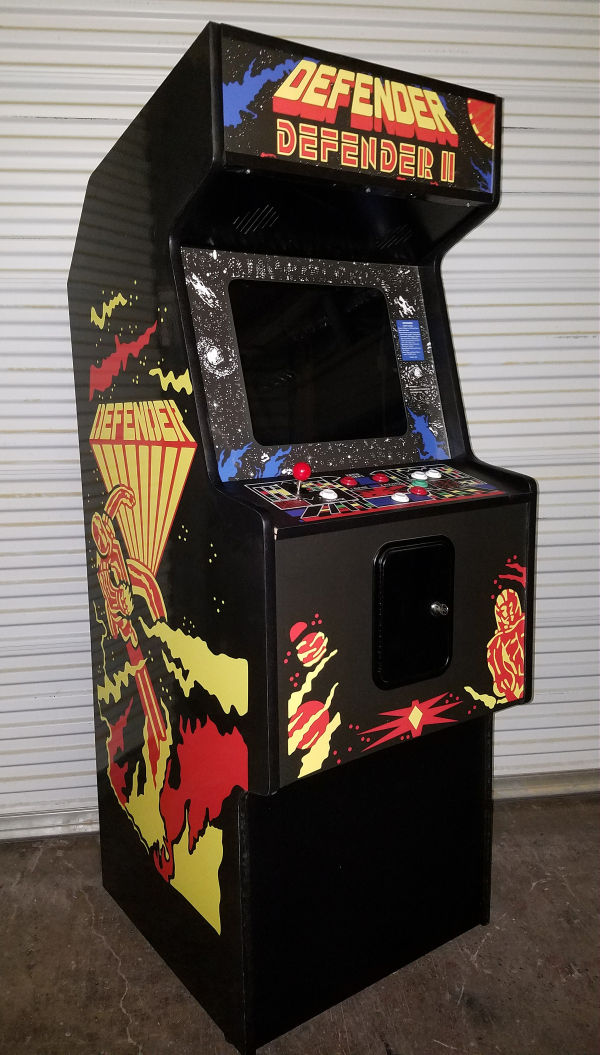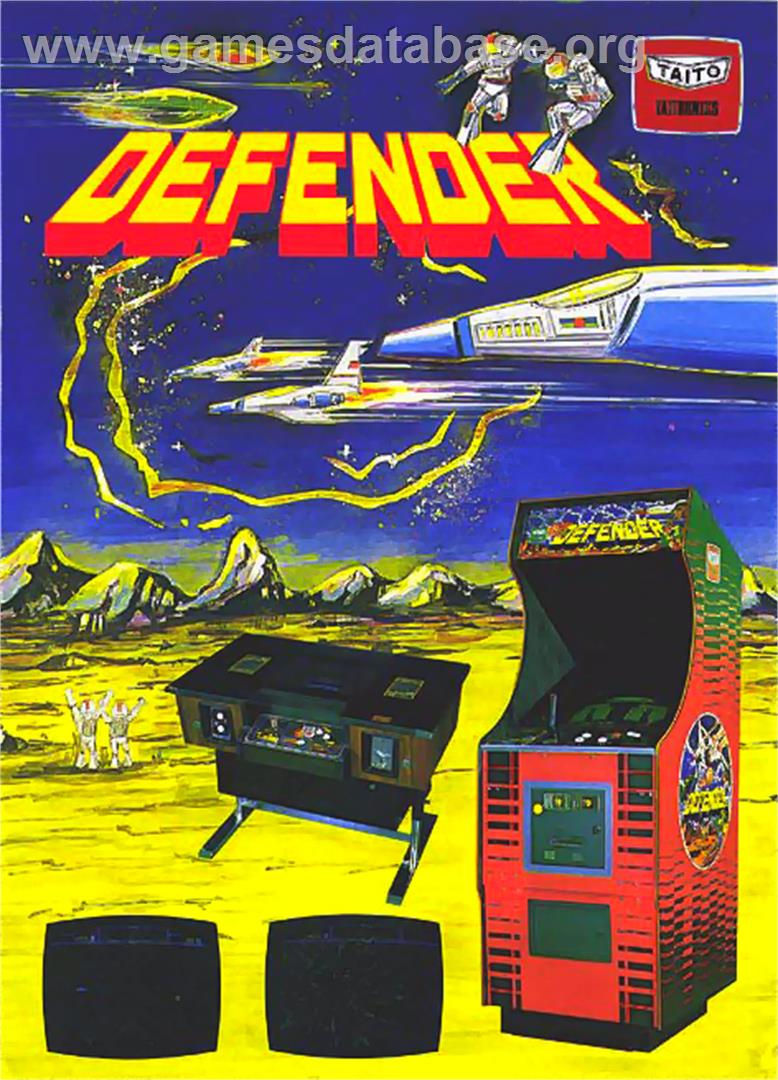Defending the Galaxy
- cait693
- Nov 5, 2021
- 4 min read
Published: November 9th, 2021
Author: Caitlynn Joann
Defender was released in 1981 by William Electronics and quickly went down in history. Defender was William Electronics' first new video game, their first game attempt was Pong clone. The explosion of arcade games in the late ‘70s encouraged William Electronics to shift its focus from pinball to arcade games. Programmers and designers included Eugene Jarvis, Sam Dicker, and Larry Demar. Jarvis and Dicker are also known for working on Defender, Robotron, and Stargate, among others. Dicker aided in Audio Engineering for the Star Wars Unleashed video game for Xbox 360 and Playstation 3. With small staff management and unfamiliarity with technology, the team was given seemingly unlimited creative freedom.

During this time, there was a lot of interest in outer space and what could be or is out there, and it certainly had an influence on the gaming industry. Jarvis felt the space setting would aid in obscure yet simple graphics that lacked realism. Initially, he spent 3 to 4 months on the color variations alone for Space Invaders and Asteroids. Jarvis created a game similar to Space Invaders with varying gameplay mechanics, but after a few weeks, the team abandoned the idea believing it lacked enjoyment. The team then tried to emulate Asteroids, but the hardware differences became too problematic, as they were using a conventional monitor. Experimenting with pixel graphics, they decided to abandon that idea as well, deciding the gameplay lacked enjoyment and visual appeal. The team agreed they enjoyed Asteroid’s wrapping effect and felt it would allow the player to fly off the screen, so they decided to create a game larger than the screen display. This gave the game the horizontal scrolling effect. Jarvis intended the screen to only scroll from left to right; fellow Williams employee Steve Ritchie, however, convinced him the game should be able to scroll in either direction.
Even after 6 months of development, the team was not satisfied with their progress. They decided the enemies needed to present a threat to the player, the first being Lander. Jarvis wanted to implement violent action but with a reasonable objective. To justify the violence he programmed he named the game Defenders, inspired by a ‘60s tv show. Playing off of the space theme, he added astronauts to give the players a purpose or defense while attacking enemies. By July development was behind schedule and the team was rushed to complete the game for an upcoming trade show in September, AMOA. The pressure was so intense that Jarvis considered resigning, and around this time Sam Dicker was hired. Dicker assisted in programming the game with audio-visual effects. He implemented an algorithm to generate explosions that were unique to Defender. Jarvis became inspired by these changes and the game development began to take off.

The team shifted their focus to developing the enemies. Landers was able to capture enemies and the ones that successfully abducted an astronaut, turned the astronaut into a mutant. Jarvis believed this aspect made the game more interesting for the player and encouraged extended play. More enemies were added with specific roles such as bombers, swarmers, pods, and baiters. September rolled around and the game was still unfinished. The evening before the AMOA trade show, the arcade cabinets were delivered for display. Developers forgot to create an attract mode, an automated sequence designed to entice an audience to play. They began working on it that night. The next morning, the team created a final erasable programmable read-only memory chip for attract mode and installed them in the cabinets. The chips did not work and the designers made additional attempts to salvage their work. After the show, the team expanded the game to allow users to play indefinitely. The display model featured 5 levels while most employees couldn’t progress past level 3 and Jarvis’ score of 60,000 points seemed undefeatable.

Defender required the player to operate a control panel containing a joystick and 5 buttons. These controls, at first glance, intimidated many players from joining and it took a while to gain interest, but once it did it took off! Defender is based on a fictional planet where the player must defeat invading aliens while also protecting astronauts. Critics focused on the game’s audio-visuals and gameplay. Defender is considered one of the most difficult video games and was ported to numerous platforms such as Atari, Intellivision, Nintendo, and Sega among others. It also inspired the development of other games as well as sequels.
Defender takes place on the surface of an unknown planet. The player navigates a spaceship, left or right as well as elevation. You are also given 5 buttons to control weapons. Your goal is to destroy alien invaders and protect astronauts from abduction. Astronauts that do become abducted will return as mutants that also attack. When you defeat the aliens your progress to the next level. If the player fails to protect the astronauts, the planet will explode and become overrun by aliens. If you survive the waves, you can restore the planet. Players have 3 lives to progress through the game and are able to earn more when they reach specific scoring benchmarks. Players will lose a life if the ship comes in contact with an enemy or its projectiles.
Despite being considered one of the most difficult titles ever created, Williams manufactured and sold almost 60,000 units at its peak. It quickly became one of the highest-grossing games of the golden age, grossing over $1 billion USD
Sources:






If you're looking for a way to nurture your child's artistic skills, the learning games drawing academy from BiniBambini are an excellent choice https://binibambini.com/products/drawing-academy/ These games allow kids to explore their creative potential while also learning about various techniques in drawing. It’s a fun yet educational activity that helps children express themselves through art, making it a perfect tool for early childhood development.
Network audit software is crucial for identifying vulnerabilities and ensuring network stability. Total Network Inventory provides all the necessary tools to conduct thorough audits. It generates clear, actionable reports that help me improve our system's performance and maintain security protocols effortlessly.
When it comes to finding a reliable booking plugin for WordPress, the booking WP plugin is hard to beat. It’s feature-rich, easy to use, and integrates well with other tools. The setup process was quick, and I was able to start accepting bookings right away. I particularly appreciate the ability to customize the booking form and the wide range of add-ons available. It’s a versatile plugin that works for various types of businesses.
Interesting and you should visit CMOLDS an app development in dubai company offering complete and top services in this domain.
I’ve been a fan of Teslahubs for a while now, and their selection of tesla model 3 exterior mods is second to none. I recently added a front lip spoiler and side skirts to my Model 3, and the difference is incredible. The car looks more aggressive and aerodynamic, and the fitment was spot on. The quality of the materials is excellent, and the installation was easier than expected. Teslahubs has everything you need to make your Tesla truly unique. Highly recommended for any Tesla enthusiast!